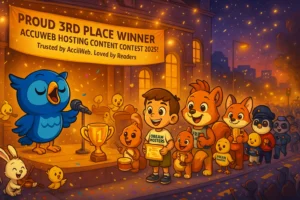Disclosure: We’re reader-supported. When you buy through links on our site, we may earn an affiliate commission at no extra cost to you. For more information, see our Disclosure page. Thanks.
Contents
- 1 How to Build a Website with ChatGPT?
How to Build a Website with ChatGPT?
Building a website with ChatGPT involves using ChatGPT to assist in various stages of the web development process. While ChatGPT itself cannot directly build the website, it can help with planning, coding, design ideas, content generation, and problem-solving. Here’s how to integrate ChatGPT into your website development workflow:
1. Planning Your Website
Before you start building the website, ChatGPT can help you brainstorm ideas for your website’s purpose, layout, content, and functionality. You can ask questions like:
- “What features should I include on my portfolio website?”
- “What pages should my small business website have?”
- “What is the best website layout for an e-commerce store?”
ChatGPT can suggest ideas for:
- Content structure: How to organize pages like home, about, services, contact, etc.
- Features: Chatbot integration, forms, interactive elements, etc.
- Design tips: Color schemes, typography, and UI/UX considerations.
2. Choosing a Technology Stack
Once you have a plan, you’ll need to choose the technology for building your website. You can ask ChatGPT about the pros and cons of different technologies:
- HTML, CSS, JavaScript: For static websites or simple dynamic content.
- WordPress or website builders: For non-coders or rapid development.
- React, Angular, Vue.js: For more complex, interactive websites.
- Backend frameworks: Node.js, Django, or Ruby on Rails, for dynamic sites requiring a database.
3. Creating the Website Design
If you’re designing the website yourself, you can use ChatGPT to help:
- HTML/CSS structure: ChatGPT can generate code snippets for the layout (e.g., a navigation bar, footer, or responsive grid).
- UI/UX advice: You can get feedback on best practices, color combinations, and user flows.
- Design tools: ChatGPT can recommend tools like Figma, Adobe XD, or Sketch for designing the website interface.
You can also use ChatGPT to write the CSS for common design components, like:
- Navigation bars
- Buttons
- Forms
- Modals
Example: Ask ChatGPT for a basic navigation bar in HTML/CSS.
4. Writing Content
Content is key to any website. ChatGPT can assist in:
- Generating copy: Whether it’s an About Us page, product descriptions, blog posts, or marketing text, ChatGPT can help you write compelling content.
- SEO: You can ask ChatGPT for SEO tips, keyword suggestions, and help with writing SEO-friendly content.
- Proofreading and editing: ChatGPT can also help improve the quality of your written content, ensuring it’s clear and engaging.
5. Coding the Website
Here’s where ChatGPT can assist directly by generating code for different sections of your website.
HTML Example:
- Creating the structure for a webpage:
htmlCopy code<!DOCTYPE html>
<html lang="en">
<head>
<meta charset="UTF-8">
<meta name="viewport" content="width=device-width, initial-scale=1.0">
<title>My Website</title>
</head>
<body>
<header>
<nav>
<ul>
<li><a href="#home">Home</a></li>
<li><a href="#about">About</a></li>
<li><a href="#services">Services</a></li>
<li><a href="#contact">Contact</a></li>
</ul>
</nav>
</header>
<section id="home">
<h1>Welcome to My Website</h1>
<p>This is a sample paragraph.</p>
</section>
<footer>
<p>© 2024 My Website</p>
</footer>
</body>
</html>
CSS Example:
You can ask ChatGPT to help you write CSS for the design elements of your page.
cssCopy codebody {
font-family: Arial, sans-serif;
margin: 0;
padding: 0;
background-color: #f4f4f4;
}
header {
background-color: #333;
color: #fff;
padding: 1rem;
}
nav ul {
list-style: none;
padding: 0;
}
nav ul li {
display: inline;
margin-right: 20px;
}
a {
color: #fff;
text-decoration: none;
}
footer {
text-align: center;
padding: 1rem;
background-color: #333;
color: #fff;
}
JavaScript Example:
ChatGPT can help write JavaScript for interactivity, like form validation or a simple dynamic feature.
javascriptCopy codedocument.getElementById('myButton').addEventListener('click', function() {
alert('Hello, World!');
});
6. Adding Dynamic Content or Backend
For more complex websites, you may want dynamic content (like a blog, user authentication, or data from a database). ChatGPT can help generate server-side code for:
- Node.js with Express
- Python with Django or Flask
- PHP (if you’re using WordPress or a custom PHP site)
Example: Ask ChatGPT how to create a contact form that sends an email or stores submissions in a database.
7. Testing Your Website
Once your website is built, it’s essential to test it. ChatGPT can provide advice on:
- Browser compatibility: How to ensure your website works across different browsers.
- Responsive design: Making sure your site looks good on all devices (mobile, tablet, desktop).
- Debugging: If something isn’t working, ChatGPT can help you debug code and solve issues.
8. Deploying the Website
After the website is ready, you need to host and deploy it. ChatGPT can guide you on:
- Web hosting platforms: Examples include Netlify, GitHub Pages (for static sites), or cloud services like AWS, Google Cloud, or DigitalOcean for dynamic websites.
- Domain names: ChatGPT can help you choose a domain name and set it up with your hosting provider.
For example, you can ask:
- “How do I deploy my HTML/CSS website on GitHub Pages?”
- “How do I connect my domain to my web hosting?”
9. Maintaining the Website
Even after deployment, your website will require regular maintenance. ChatGPT can help with:
- Updating content: You can ask for help in writing new blog posts or updating existing pages.
- SEO optimization: Asking for tips to improve your site’s search engine ranking.
- Security best practices: How to protect your website from attacks and ensure user data is safe.
In Conclusion:
To build a website with ChatGPT, you can rely on it for:
- Planning and brainstorming ideas
- Writing code (HTML, CSS, JavaScript)
- Creating and editing content
- Offering design, SEO, and user experience advice
- Assisting with backend development and deployment
While ChatGPT can’t build the entire site for you, it is an excellent resource for guidance, generating code snippets, and solving development challenges as you work through the process.

